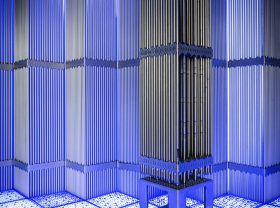Series of articles on barriers 3/6: The fuel rod cladding tubes (fuel assemblies part 2 of 2)
The fuel pellets are filled into metal tubes. Together with the nuclear fuel matrix, the cladding tubes are the first barrier for trapping radioactive substances in nuclear power plants.
The fuel pellets are filled into metal tubes, referred to as cladding tubes. Helium pressure is applied to the cladding tubes filled with pellets and they are welded gas-tight. Finally, the resulting fuel rods are combined into fuel assemblies, which make up the reactor core. In pressurised water reactors, about 200 fuel rods are arranged to form a square fuel assembly, while about 90 fuel rods are used in boiling water reactors.
Gas-tight and welded

The fuel rod cladding tubes are manufactured from a zirconium alloy, an alloy of various metals, but primarily (about 98 percent) zirconium. Zirconium is relatively corrosion-resistant, i.e. resistant to oxidation. It is also ductile at the operating temperatures and has a low level of interaction with neutrons.
The pipes are about four metres long and about one centimetre in diameter. They are welded gas-tight and enclose the solid and gaseous fission products contained in the nuclear fuel.
The cladding tubes are not completely filled with pellets. The top provides space for the gaseous substances that are generated during reactor operation and nuclear fission. The cladding tubes are designed to withstand the pressure of these gases and the ambient pressure in the reactor.
This is the third of six articles on the topic of barriers for trapping radioactive substances. The first describes the barrier principle, while articles 2 to 6 describe the various barriers.

